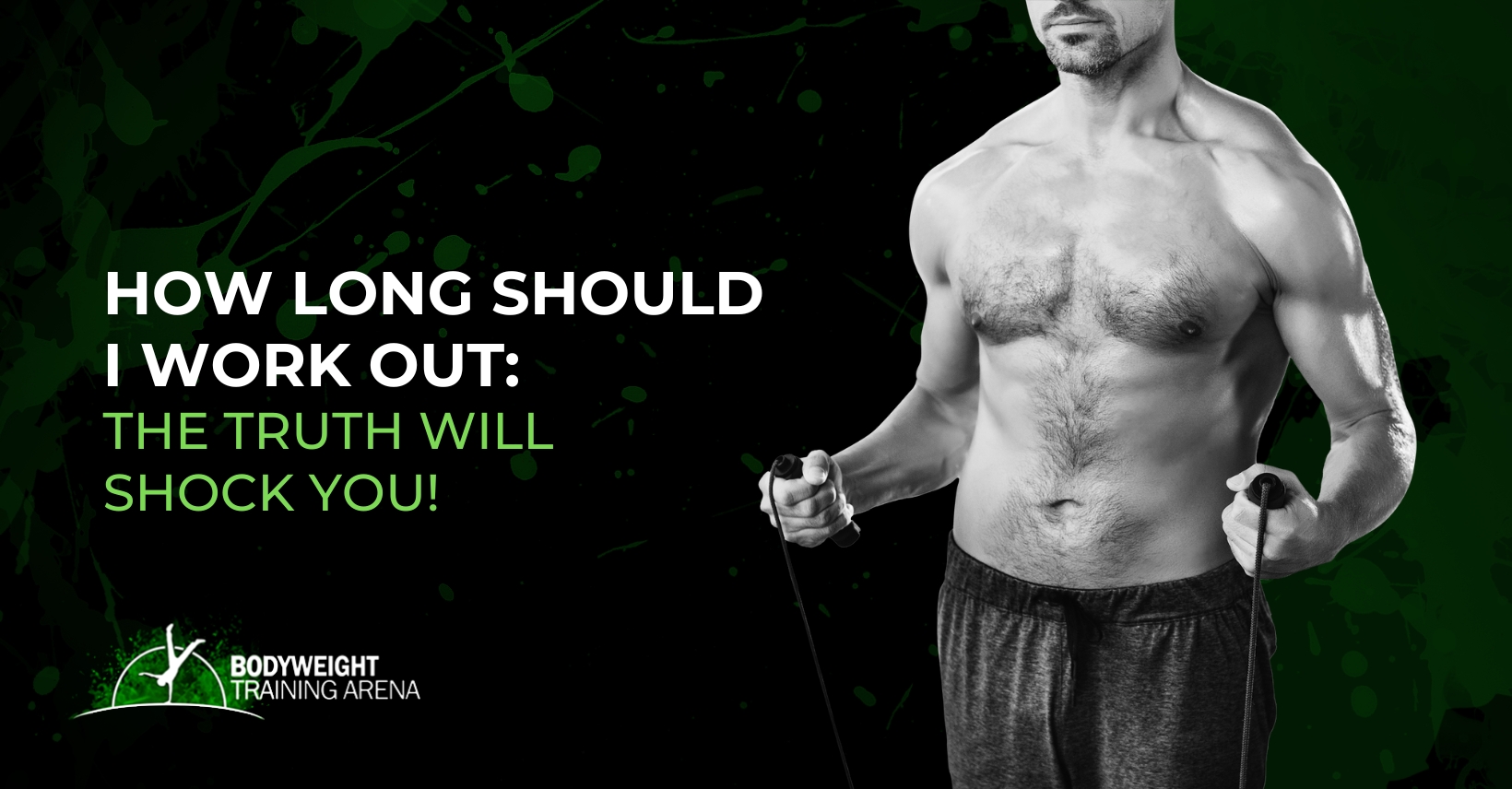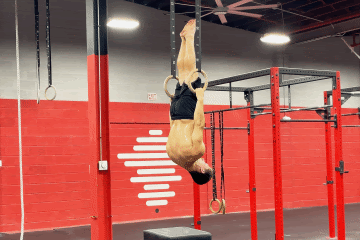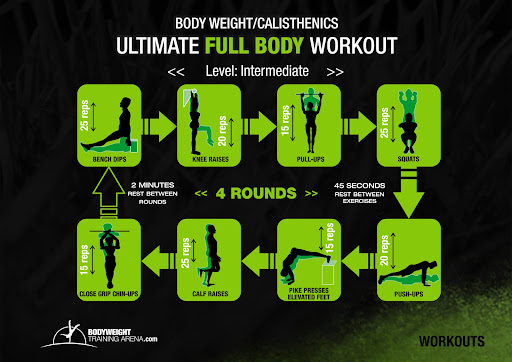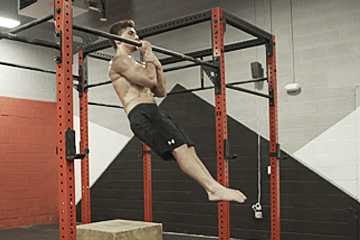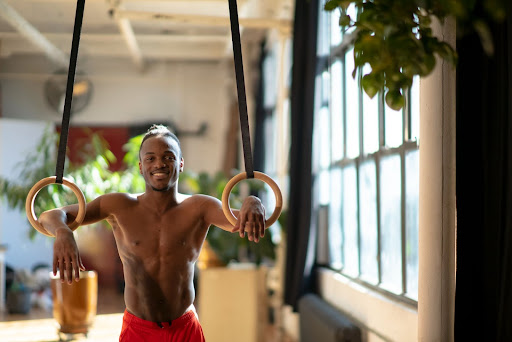When it comes to working out, there are a lot of myths and misconceptions. How long you should workout out is one of them. Some people believe that they have to spend hours in the gym every day in order to see results. This isn’t true! In fact, you can get great results by working out for just a few minutes each day. So how long do you really need to work out to see progress? The answer: IT DEPENDS. Shockingly annoying, right? Yes, it’s not a straightforward answer, but it’s the best answer you can get. How long you need to work out depends on your goals, training capacity, current skill level, lifestyle, age, training program, preference, and more. Rather than focusing on your workout duration, it’s wise to shift your focus to what you want to achieve and how willing are you to work toward them. Keep reading to find out how long you should be working out each day for optimal results!
🎯What can affect your workout duration?
The current general guidelines set by the Department of Health and Human Services recommend that adults should get at least 150 minutes of moderate aerobic/cardiovascular activity or 75 minutes of vigorous exercise per week. Along that, it’s ideal to get at least 2 sets of resistance exercises (such as calisthenics) that target the major muscle groups tiring enough to hit around 12-15 reps at least 2 times or more per week. Beyond the deliberate exercise, it’s still ideal to keep moving and stay active with any movements as simple as walking your dog, gardening, or playing with your kids (which a lot of Movement Athletes enjoy: Learn more here – 📍Success Stories). It’s a good place to start to get an idea of how much training you need to do. However, that guideline isn’t specific for any goals and is just set for general cardiovascular health. While it can help in maintaining weight or even📍fat loss, it’s still best to first know these factors that can determine your workout duration.
✨Different training goals
The first step to knowing your ideal workout duration is to know your training goals. This asks the question of what you want to achieve with your training. Each goal will require a different duration. For example, if your goal is to improve endurance, you will need to work out for longer periods of time than if your goal is to build muscle. Here are a few examples of goals you might want to learn and potential training duration.
🔥Endurance or Cardiovascular Health
Endurance pertains to your heart and lungs’ ability to work over an extended period. This is different from cardiovascular health, which is your heart’s ability to pump blood efficiently throughout your body. Both are essential for a healthy lifestyle, but they don’t require the same duration of training compared to the rest. Endurance can be improved by working out at a moderate pace for longer periods of time. Specialized endurance athletes can even train for hours since their goal is to extend their capacity in their sport. Read more here for calisthenics cardiovascular training: 📍15 Best Bodyweight Cardio Exercises
🔥Building Muscle & Strength
Ah yes! Building muscle and strength is one of the most popular goals of working out. Getting the physique and strength of a greek god is the dream of many. To gain muscle, you need to resistance train with an overload stimulus to force your muscles to grow and adapt. How heavy and how often you train will affect the duration. A good starting point is around 30 minutes to an hour, two to three times a week. But this still depends on many factors which we will cover more later. Learn how to build muscle here: 📍How to Build Muscle Mass with Bodyweight Only
🔥Fat loss/Weight loss
Let’s first clarify the distinction between fat loss and weight loss. Most people often want to achieve weight loss, but fat loss is the more ideal goal. This is because weight loss can often be a result of losing water weight or muscle mass and not just body fat. To lose fat, you need to create a calorie deficit by either reducing your food intake, increasing your energy expenditure through exercise, or ideally, both. How many calories you need to eat and how much exercise you need to do will affect the duration. Generally, there’s no set duration or common duration for fat loss workouts, because the main priority to achieve this goal is through your diet. You can also work out as little as 20 minutes every other day and make significant gains from your routine. Here’s an excellent example you can use: 📍20-minute HIIT Workout for Fat Loss & Cardio Health To learn more about fat loss, read this: Fat Loss Ultimate Guide [INSERT LINK]
✊Varying Rest periods
For each goal and each exercise within your workout, there will probably be rest periods (maybe except for endurance training). Rest periods in part of a routine so that your body can generate energy to do more reps. These reps will stimulate your muscles and push them for growth. Here’s a brief guideline for rest periods: 3 to 5 minutes – Strength and strength-based skill training 1 to 2 minutes– Hypertrophy training 30 seconds or less – Endurance training Don’t neglect your rest periods. A 2016 study shows that it can highly impact your development especially if you’re aiming to build strength and muscle. Dive deeper into the rest periods in this article: 📍How Long Should I Rest in between Sets?
🏆Your current skill level
What your body can do and cannot do will also dictate the duration of your workout. If you’re a beginner, your workouts will tend to be shorter. The reason for this is that your muscles are still adapting and learning the movement. You might also get tired faster since you haven’t built up an endurance base yet. This is why it’s essential to start slowly and work your way up as you get better. On the other hand, if you’re more advanced, you can handle longer and more challenging workouts. This is because your muscles have already adapted to the movement and you’ve built up a good base of endurance. However, advanced athletes should be wary of overtraining. Longer workouts don’t always mean you’ll get more from your workout!
💪Training structure
The way you structure your workout will also affect its duration. If you’re just starting out, it’s best to keep things simple. Start with the basics and work your way up as you get stronger and more comfortable with the movements. But if you’re more experienced, you can add in different exercises, sets, and reps to keep things interesting and challenging. Just make sure not to overdo it!
Full Body VS Split Training
You can also choose among the two popular training structures: the full-body workout and the split. A full body workout requires you to hit the whole body which tends to give you a longer workout around an hour or hour and a half at most. Split training splits the workout per body part which also significantly cuts the training time. However, you will need to train more frequently with this training approach. Read more about this topic: 📍Full Body VS Split Routine: Which One is the Best for You
Circuit training
For more advanced athletes, you also have the luxury of opting for more of a circuit-type training routine which offers a good way to decrease your workout duration. Circuit training is a series of exercises done one after the other with little to no rest in between. This type of training is excellent for fat loss and improving cardiovascular endurance. However, keep in mind that circuit training has its advantages and disadvantages. Read more: 📍What is Circuit Training: Everything You Need to Know
Greasing the Groove
Beginners to advanced can also adopt a GTG or greasing-the-groove workout approach. This is a great way to gradually increase the duration of your workouts while still maintaining good form and technique throughout the day. Greasing the groove involves picking one or two exercises and doing them throughout the day in short sets with long rest periods in between. For example, if you wanted to work on your pull-ups, you could do sets of three every hour or so throughout the day. This would help you get better at the movement while still allowing your body to recover in between sets.
😎Lifestyle
The major reason why many people fail to even get started working out is their lack of time. We all know that leading a sedentary lifestyle can take a toll on our health but with the hectic pace of life, it’s hard to find time to even get started. The good news is that you don’t need to spend hours in the gym to see results. This is the major 📍advantage of calisthenics, which helps you spend more time on your workout and less on the commute to the gym. Each person’s schedule is different. So finding the time that will fit your workout will greatly depend on your lifestyle. But if you’re consistent and dedicate at least 30 minutes to an hour of your day to working out, you’ll see results in no time! If you need help finding time, here are 10 Movement Athlete’s pieces of advice: 📍How to Find Time for Your Workout
🤔How long should you work out?
Frustrated that you still haven’t gotten a more direct answer to the question? ” I’m sorry to say this, but the time your spend on your workout highly depends on you. While training duration is something you need to consider to fit your schedule, we highly recommend shifting your perspective to somewhere else. Instead of thinking about how long you need to work out, think about these things that can significantly affect your workout, progress, and long-term results.
🤔What you should focus on instead of workout duration?
⚡️How challenging is your workout?
We’re talking about your exercise intensity or how hard your exercises are. Do the exercises in your training session challenge you, or just bore you with ease? Higher intensity exercises often require longer rest periods but fewer reps and sets. It can dictate your workout duration as well. However, setting a proper workout intensity is crucial for achieving any goal. This is why our approach of choice is 📍progressive calisthenics. It means having multiple ways of challenging your body even from a single exercise. Keep your workouts challenging no matter how short or long your workout is.
⚡️How much do you train per session?
A single set of heavy exercises will not do you any good. This is where training volume comes in. Training volume is basically measured as reps X sets X intensity of an exercise. As seen in the formula, it goes hand in hand with training intensity. Calisthenics often has a general guideline for reps and sets. You can read more here: 📍5 Simple Tips to Build Muscle at Home Or keep your exercises challenging and tiring enough around the 8 – 12 rep range for 3 – 4 sets. Once you get proficient with an exercise, aim to go a bit higher for a fundamental mastery. After that, you can aim for higher skill progressions. Here’s a brief guide: Push-ups – 30 reps Dips – 20 reps Pull-ups – 12 reps Squats – 25 reps
⚡️How often do you train per week?
Our bodies need to recover in between sessions. But the amount of recovery depends on the two factors above as well as your training goals. Typically, more challenging workouts require you to rest at least 24 hours for the body part you worked on. That’s why a combination of three times per week of upper body training and twice of lower body training is a popular training option. You get to rest your upper body while you train your legs and vice versa. You can also train every day given that the intensity for each workout is relatively manageable and you get enough nutrition and recovery. Read more here: 📍Can I Workout Every Day?
⚡️How much do you enjoy your workout?
The number one factor that dictates workout duration and making long-term progress is probably how much you enjoy your workouts. If you hate your workout, then you’ll probably feel that the duration is much longer and you’ll find ways to skip it. On the other hand, if you look forward to your workout, then you might want to do it every day and for a longer duration. It all comes back to how motivated you are towards your goals. Choose an exercise routine that you can see yourself doing for a long time. While we are proud calisthenics advocates, we won’t push you to train with body weight if you have tried it and didn’t enjoy it. If you haven’t tried bodyweight training yet, feel free to test out our PERSONALIZED & ADAPTIVE Calisthenics training program. START YOUR 7-DAY FREE TRIAL NOW!
🧐Frequently Asked Questions
🔎Is one hour of working out enough?
Most definitely! With an hour, you can already achieve so much in your workout. But then again, how you spend that hour is more important than the duration itself. If you have an hour of doing too much cardio, but your goal is to build muscle, then you’re only setting yourself up for frustration. Align your training towards your goals. In addition, you can also play your favorite playlist while working out. Current research found that playing your preferred music can boost your performance and gains. In fact, another study suggests that cellphone usage (whether texting or engaging in social media) makes the workout more enjoyable and improves exercise adherence. You don’t have to put your phone down while working out especially if you’re training with The Movement Athlete app! 🙂
🔎Is two hours too much workout?
It depends. Are you doing many high-intensity exercises to build muscle and strength? If so, then yes, that’s probably too much. However, if you’re playing with your mobility or flexibility or walking for two hours, then that’s ok. It’s going back to aligning what you do to what you need to achieve. Of course, your current condition and skill level also plays an important factor here.
🔎How many calories do you burn in an hour?
The answer to this question depends on many factors such as your workout intensity, workout type, and individual metabolic rate. Here’s an average calorie per 30-minutes of recreational activity according to Harvard Medical School.
| Activities | 125-pound person | 155-pound person | 185-pound person |
| General weight lifting | 90 | 108 | 126 |
| Yoga | 120 | 144 | 168 |
| Moderate calisthenics | 135 | 162 | 189 |
| Walking 3.5 mph | 107 | 133 | 159 |
| Running 5mph | 240 | 288 | 336 |
Complete list here: Calories Burned in 30-minutes of Leisure and Routine Activities You might notice that the calories burned are only equal to a big, cheeky burger and fries. So always keep in mind proper nutrition to get the most from your workout. Especially if you’re aiming for fat loss or muscle gain!
🔎What is a proper workout schedule?
Again, it boils down to mixing and matching a sustainable, manageable, but challenging enough training intensity, training volume, and training frequency. As mentioned above, set at least 24 hours for recovery for targeted muscle groups.
🔎What is overtraining?
Overtraining is defined as “training beyond one’s capacity to recover.” It can lead to many problems such as a decrease in performance, illness, and injuries. If you find that your performance has decreased or you’re always getting sick or injured, then it might be time to reassess your workout schedule. You can read more about it here: The 📍Ultimate Guide to Workout Recovery
🔎What are the signs of overtraining?
- Decrease in performance
- Feeling sick or injured often
- Lack of motivation
- Excessive fatigue
- Insomnia
- Loss of appetite
If you find that you have any of these signs, then it’s time to take a step back and reassess your workout routine. Rest is as crucial as your training.
🔎How do I avoid overtraining?
There are a few things that you can do to avoid overtraining:
- Get enough sleep: Most people need around eight hours of sleep.
- Eat well: Eating nutritious food helps your body recover from workouts and perform at its best.
- Take rest days: Allow your body to recover by taking one or two days off from working out each week.
The secret to avoiding this is through 📍auto-regulation. Autoregulation is the ability to listen to your body and change your workout accordingly. If you’re feeling good, then go ahead and push yourself a bit more. But if you’re feeling tired or sore, then back off and take it easy. The Movement Athlete implemented this strategy in their workout app making it adaptive to your everchanging, busy lifestyle. Not every day you can go all-out in your training. This is why the app offers varying levels of workouts, so you can always find something that works for you on that particular day. Auto-regulation helps you enjoy your challenging workouts without burning out too soon. This means you’ll be training for the long term or even a lifetime!
📌Takeaway
How long you should work out depends on your goals, how much you train per session, how often you train per week, your current skill level, and your lifestyle. But instead of focusing on workout duration, we recommend focusing on the QUALITY of your workout instead. It doesn’t matter if it’s only 15 minutes a day or an hour scattered throughout the day. As long as you’re putting in the work consistently and that you enjoy, you will be making amazing progress and results. Thank you for reading! We hope you enjoyed this article. If you have any questions or comments, please feel free to leave them down below! Until next time, train smarter, not harder!
🤔Can’t Decide How Long You Need to Train?
The Movement Athlete app offers an adjustable training program depending on your lifestyle and goals. Do you only have 15 minutes a day to work out? Just set it up on your phone and you’re good to go. Looking for something lengthier, set it up to 90 minutes! This is personalization at its finest. And of course, the training program is adjusted to your fitness level and current energy levels! Make your workout effective, efficient, safe, and most of all, FUN! Train with us and become a MOVEMENT ATHLETE!

